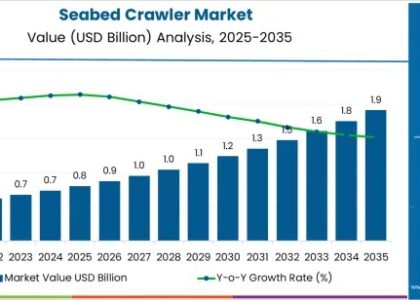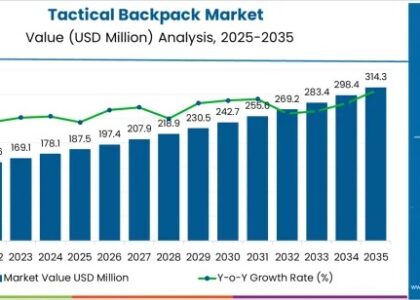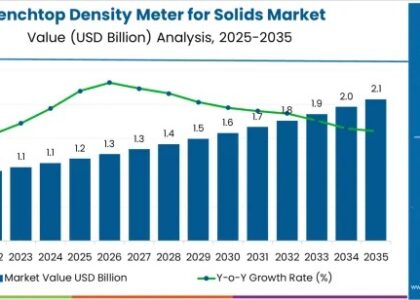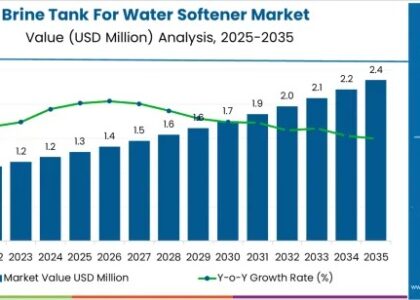The canned food packaging market is anticipated to thrive at an average CAGR of 4.8% between 2023 and 2033. The market is expected to have a share of US$ 46.70 billion by 2033, while it is likely to be valued at US$ 29.22 billion in 2023.
The canned food packaging market has experienced several significant developments and trends in recent years. While my knowledge is based on information available up to September 2021, I can provide you with a snapshot of the market scenario as of that time. Please keep in mind that market conditions may have evolved since then, and it’s essential to verify this information with the latest sources for the most up-to-date insights.
Get Sample Copy of the Report: https://www.futuremarketinsights.com/reports/sample/rep-gb-4104
Competitive Landscape:
Ball Corporation, Del Monte Foods, Inc., Crown Holdings, Amcor Limited, Anchor Glass Container Corporation, and Siligan Containers are key players in the global canned food packaging market.
Because of several leading participants, the market is extremely competitive. While global players such as Ball Corporation, Del Monte Foods, Inc., and Crown Holdings control a sizable market share, several regional players are active in key growth regions, particularly Asia Pacific.
For Instance:
- In June 2022, Ball Corporation was expected to expand its operations in South America, landing in Peru with a new manufacturing plant in Chilca in response to the growing global demand for aluminum cans. The operation may begin in 2023 and have a capacity of more than 1 billion beverage cans per year.
- In September 2021, Amcor Rigid Packaging (ARP) created a more responsible bottle for one of the country’s most popular ingredients – cooking oil. It is the country’s first cooking oil bottle made entirely of recycled materials.
- Huber Packaging has introduced a long range of metal cans named Canister. The range is made of tinplate and carries a variety of chemicals such as wood preservatives, thinner, and even edible oils, and other food items.
Canned Food Packaging Market Overview:
- Definition and Function:
- Canned food packaging refers to the containers used for preserving and packaging various food products in sealed cans. Cans are typically made of metal (e.g., aluminum or steel) and are used to protect food from contamination, extend shelf life, and maintain product quality.
- Market Drivers:
- Convenience: Canned foods offer convenience as they have a long shelf life, require no refrigeration, and are easy to store and transport.
- Preservation: Canning helps preserve food by sealing it in an airtight container, preventing spoilage and microbial growth.
- Variety: A wide range of food products, including vegetables, fruits, meat, fish, and ready-to-eat meals, are available in canned form.
- Key Types of Canned Food Packaging:
- Metal Cans: Traditional metal cans are the most common type of packaging for canned foods. They are known for their durability and ability to protect food from external factors.
- Easy-Open Ends: Many canned products now come with easy-open ends, making it more convenient for consumers to access the contents.
- Aseptic Cartons: Some liquid foods are packaged in aseptic cartons that provide a longer shelf life without the need for preservatives.
- Market Trends:
- Health and Sustainability: Consumers are increasingly looking for healthier and sustainable food options. This has led to the development of BPA-free cans and environmentally friendly packaging.
- Convenience and Portion Control: Single-serving and portion-controlled canned foods cater to changing consumer preferences.
- Innovative Packaging: Brands are introducing innovative packaging designs and materials to differentiate their products.
- Key Players:
- Major players in the canned food packaging market include Crown Holdings Inc., Ardagh Group, Ball Corporation, and Silgan Containers, among others.
- Regional Variation:
- The canned food packaging market varies by region, influenced by local dietary preferences, economic factors, and consumer demand.
- Challenges:
- Environmental Concerns: The use of metal cans can raise environmental concerns due to the energy and resources required for production and recycling.
- Competition from Other Packaging Types: Canned foods face competition from alternative packaging forms like pouches and plastic containers.
Request Customization @ https://www.futuremarketinsights.com/customization-available/rep-gb-4104
Regional Analysis:
- The United States market leads the North American canned food packaging market in market share. The United States held a healthy market share in 2022. The factors attributed to the growth are the rising popularity of canned beverages among youngsters, the launch of organic and natural consumables packed in cans, and the rising tourism industry. The North American region held a market share of 29% in 2022.
- The German canned food packaging market held a healthy market share in 2022. The market growth is caused by the higher tourist footfall, authentic and local German food products transforming their packaging style, and several social events like music concerts. The European region held a market share of 36% in 2022.
- The Indian market thrives at a steady CAGR between 2023 and 2033. The growth is attributed to the higher consumption of packaged items and increasing sales of international food items with canned packaging. The Asia Pacific region held a market share of 25% in 2022.
- Based on the type of food, the canned seafood and fish segment leads the market.
- Based on material type, the aluminum segment leads the market with the leading market share.
Purchase this report to Uncover Segment-specific Information, Identify Key Trends, Drivers, and Challenges: https://www.futuremarketinsights.com/checkout/4104
About Future Market Insights (FMI)
Future Market Insights, Inc. (ESOMAR certified, recipient of the Stevie Award, and a member of the Greater New York Chamber of Commerce) offers profound insights into the driving factors that are boosting demand in the market. FMI stands as the leading global provider of market intelligence, advisory services, consulting, and events for the Packaging, Food and Beverage, Consumer Technology, Healthcare, Industrial, and Chemicals markets. With a vast team of over 5000 analysts worldwide, FMI provides global, regional, and local expertise on diverse domains and industry trends across more than 110 countries.
Contact Us:
Future Market Insights Inc.
Christiana Corporate, 200 Continental Drive,
Suite 401, Newark, Delaware – 19713, USA
T: +1-845-579-5705
For Sales Enquiries: sales@futuremarketinsights.com
Website: https://www.futuremarketinsights.com
LinkedIn| Twitter| Blogs | YouTube






